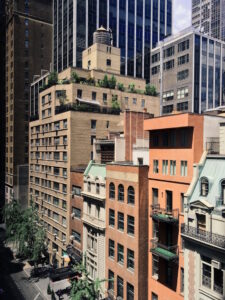Homeowners’ associations (HOAs) are essential to preserving and improving the standard of living in neighborhoods. Their primary responsibility is to control repairs and maintenance in the neighborhood. However, it can occasionally be confusing to know which repairs are the HOA’s responsibility and which are the individual homeowners.



In this blog, we will delve into the common types of repairs that HOAs are typically responsible for, providing clarity to both homeowners and prospective buyers in community living.
But first thing first, what is HOA?
Understanding HOA:
The term HOA refers to a homeowner’s association. Basically, it’s an organization that manages a community of houses or apartments. Here’s a breakdown of what they do:
- Make and enforce rules: HOAs create rules for homeowners called Covenants, Conditions, and Restrictions (CC&Rs). Those rules can cover things like paint colors, landscaping, parking, and noise levels.
- Maintain common areas: HOAs take care of shared spaces in the community, like parks, pools, gyms, and hallways. The maintenance costs are paid by residents through HOA fees.
- Oversee the community: Homeowner associations are typically managed by volunteer boards made up of residents who are responsible for budgeting, addressing residents’ concerns, and enforcing CC&Rs.
Types of Repair HOAs are Responsible For
There are major 4 types of repairs that HOAs are responsible for i.e. common area maintenance, utility services, structural repairs, and exterior maintenance. Let’s understand them better:
- Common Area Maintenance: This refers to the upkeep and repair of shared spaces that all residents can use. Examples include:
- Parks and playgrounds
- Swimming pools and Jacuzzis
- Community centers and clubhouses
- Gyms and fitness facilities
- Walking paths and sidewalks
- Trash collection areas
- Utility Services: HOAs are often responsible for maintaining and repairing the infrastructure that delivers essential services to all the units. This may include:
- Shared water lines and sewage systems
- Electrical lines for common areas
- Gas lines (if applicable)
- Trash chutes
- Structural Repairs: HOAs play a crucial role in ensuring the structural integrity of the entire community. They are typically responsible for repairs to:
- Roofs (including leaks and replacements)
- Foundations and support structures
- Exterior walls (painting, cracks, and general wear and tear)
- Shared amenities like elevators (in condos or high-rise buildings)
Understanding HOA:
The term HOA refers to a homeowner’s association. Basically, it’s an organization that manages a community of houses or apartments. Here’s a breakdown of what they do:
- Make and enforce rules: HOAs create rules for homeowners called Covenants, Conditions, and Restrictions (CC&Rs). Those rules can cover things like paint colors, landscaping, parking, and noise levels.
- Maintain common areas: HOAs take care of shared spaces in the community, like parks, pools, gyms, and hallways. The maintenance costs are paid by residents through HOA fees.
- Oversee the community: Homeowner associations are typically managed by volunteer boards made up of residents who are responsible for budgeting, addressing residents’ concerns, and enforcing CC&Rs.
Types of Repair HOAs are Responsible For
There are major 4 types of repairs that HOAs are responsible for i.e. common area maintenance, utility services, structural repairs, and exterior maintenance. Let’s understand them better:
- Common Area Maintenance: This refers to the upkeep and repair of shared spaces that all residents can use. Examples include:
- Parks and playgrounds
- Swimming pools and Jacuzzis
- Community centers and clubhouses
- Gyms and fitness facilities
- Walking paths and sidewalks
- Trash collection areas
- Utility Services: HOAs are often responsible for maintaining and repairing the infrastructure that delivers essential services to all the units. This may include:
- Shared water lines and sewage systems
- Electrical lines for common areas
- Gas lines (if applicable)
- Trash chutes
- Structural Repairs: HOAs play a crucial role in ensuring the structural integrity of the entire community. They are typically responsible for repairs to:
- Roofs (including leaks and replacements)
- Foundations and support structures
- Exterior walls (painting, cracks, and general wear and tear)
- Shared amenities like elevators (in condos or high-rise buildings)
- Exterior Maintenance: HOAs take care of the overall appearance of the community by maintaining the exteriors of buildings. This might involve:
- Painting and repairs to siding
- Roof maintenance and repairs
- Gutter cleaning and repairs
- Window and door maintenance (in common areas)
- Driveways and parking lots (depending on the HOA)
It’s important to remember that the specific responsibilities of an HOA can vary depending on the community’s governing documents. If you’re unsure about who’s responsible for a particular repair, it’s always best to consult your HOA’s Covenants, Conditions, and Restrictions (CC&Rs).
Common Area Maintenance
HOAs are primarily responsible for the upkeep and maintenance of common areas within the community. These areas often include:
Landscaping
Maintaining lawns, trees, shrubs, and flower beds in shared spaces is typically the responsibility of the HOA. This ensures a consistent and appealing appearance throughout the community.
Walkways and Paths
Repairing and maintaining community walkways, paths, and common areas like playgrounds, swimming pools, gyms, and clubhouses is typically the responsibility of the HOA.
Exterior Building Maintenance
Common areas such as building exteriors, roofing, and shared walls are typically the responsibility of the HOA. Maintaining the exterior includes repairs like repainting, roof maintenance, and structural repairs.
Utility Services
Utilities are often provided as part of the HOA fees, and the HOA is responsible for maintaining and repairing common utility systems such as:
Street Lighting
Ensuring that streetlights within the community are functioning properly is usually the HOA’s responsibility.
Water and Sewer Systems
The HOA is responsible for maintaining and repairing shared water and sewer systems, including pipelines and drainage systems.
Trash Collection
Many HOAs include trash collection as part of their services. This typically covers trash removal and disposal, as well as the maintenance of communal trash receptacles.
Structural Repairs
When it comes to structural issues within individual homes or condominium units, the line between homeowner and HOA responsibility can become a bit blurred. Generally, the HOA is responsible for the structural elements of the building that are considered common property. This may include:
Building Foundations
Repairs to the foundation of a condominium building or shared walls are usually the responsibility of the HOA.
Roof Repairs
If the roof is shared or part of the common property, the HOA is responsible for its maintenance and repair.
Exterior Maintenance
HOAs typically have guidelines governing the appearance of individual homes, including the exterior. Therefore, they may also oversee certain aspects of exterior maintenance, such as:
Exterior Paint
Depending on the community’s rules, the HOA may dictate the color and type of paint homeowners can use on their homes.
Fencing and Landscaping
HOAs often regulate fencing and landscaping, ensuring they align with community aesthetics and guidelines.
Conclusion
In a homeowners’ association, understanding the division of repair responsibilities between the HOA and individual homeowners is crucial for a harmonious and well-maintained community.
Typically, the HOA takes care of common areas, utilities, and structural elements, while homeowners are responsible for the maintenance and repairs within their individual units or homes. However, the specifics can vary depending on the HOA’s governing documents, so it’s essential to consult these documents and communicate with the HOA board to ensure clarity regarding repair responsibilities.
Ultimately, a well-functioning HOA can contribute significantly to the overall well-being and property values of a community.




